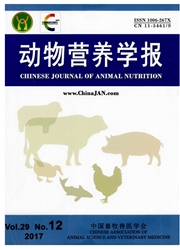

 中文摘要:
中文摘要:
最近的年在动物营养在肽的角色见证成长兴趣。在在喂前的动物副产品或植物来源饲料的蛋白质的化学、酶,或微生物引起的水解作用是产生在家畜,家禽和鱼有营养、生理或规章的功能的高质量的小或大的肽的一个吸引人的工具。这些肽可以也在胃肠的道从摄取的蛋白质被形成,但是结果的肽的类型能与动物的生理的条件和食谱的作文极大地变化。在小肠,大肽是到小肽的 hydrolyzed,它比免费氨基酸(AA ) 快被吸收进 enterocytes 在血发行量提供 AA 的一个更多的平衡模式。植物或动物来源的一些肽也有抗菌剂,抗氧化剂, antihypertensive,和 immunomodulatory 活动。在他们的营养的价值以外授与生物功能的那些肽被称为 bioactive 肽。他们通常是在长度的 2-20 AA 残余,但是可以由组成 > 20 AA 残余。一些的包括(例如2-8%)动物蛋白质 hydrolysates (例如,猪的肠,猪的 mucosa ,大马哈鱼内脏,或家禽织物 hydrolysates )或在实际玉米的大豆蛋白质 hydrolysates --并且大豆基于饭的食谱能保证理想的增长率性能并且在刚断奶的猪喂效率,年轻小牛,hatching以后家禽,和鱼。因此,在优化营养的蛋白质 hydrolysates 抓住诺言国内并且同伴动物,以及他们的健康(特别地毁坏健康) 并且健康。
 英文摘要:
英文摘要:
Recent years have witnessed growing interest in the role of peptides in animal nutrition. Chemical, enzymatic, or microbial hydrolysis of proteins in animal by-products or plant-source feedstuffs before feeding is an attractive means of generating high-quality small or large peptides that have both nutritional and physiological or regulatory functions in livestock, poultry and fish. These peptides may also be formed from ingested proteins in the gastrointestinal tract, but the types of resultant peptides can vary greatly with the physiological conditions of the animals and the composition of the diets. In the small intestine, large peptides are hydrolyzed to small peptides,which are absorbed into enterocytes faster than free amino acids(AAs) to provide a more balanced pattern of AAs in the blood circulation. Some peptides of plant or animal sources also have antimicrobial, antioxidant,antihypertensive, and immunomodulatory activities. Those peptides which confer biological functions beyond their nutritional value are called bioactive peptides. They are usually 2–20 AA residues in length but may consist of 〉20AA residues. Inclusion of some(e.g. 2–8%) animal-protein hydrolysates(e.g., porcine intestine, porcine mucosa,salmon viscera, or poultry tissue hydrolysates) or soybean protein hydrolysates in practical corn-and soybean mealbased diets can ensure desirable rates of growth performance and feed efficiency in weanling pigs, young calves,post-hatching poultry, and fish. Thus, protein hydrolysates hold promise in optimizing the nutrition of domestic and companion animals, as well as their health(particularly gut health) and well-being.
 同期刊论文项目
同期刊论文项目
 同项目期刊论文
同项目期刊论文
 期刊信息
期刊信息
